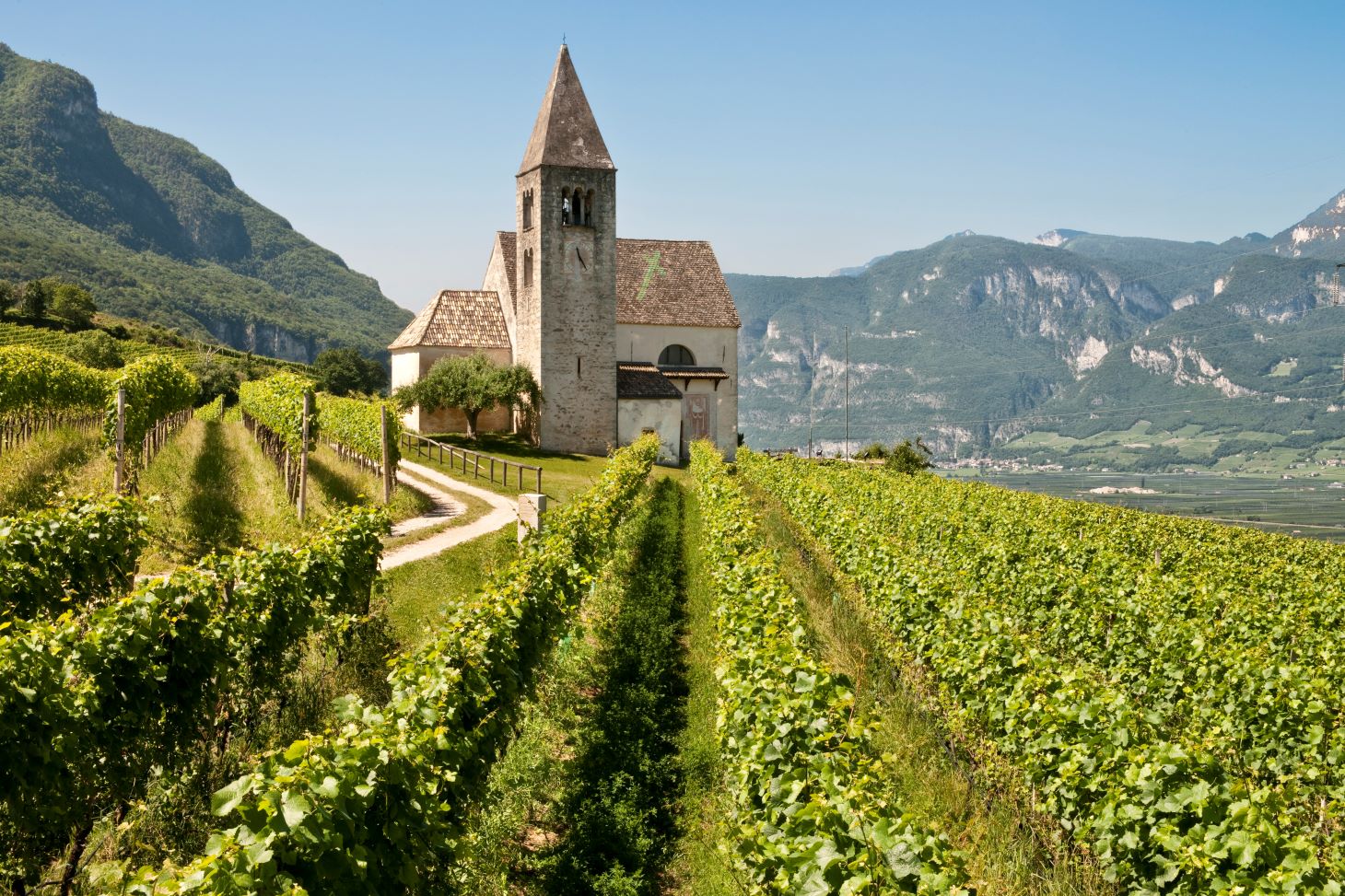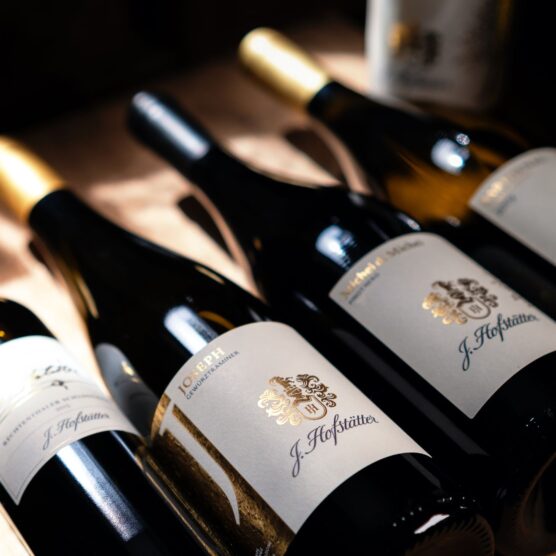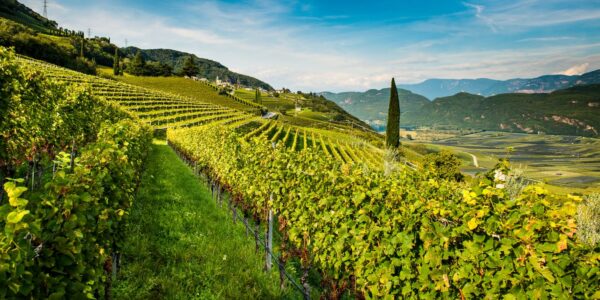Italian Wines With Alpine Attitude
Alto Adige’s vibrant whites and juicy reds.

Alto Adige, Italy’s northernmost wine region and one of its smallest, has quickly become known for its stunning wines. From vineyards clinging to alpine mountain slopes and nestled in river valleys come edgy whites with sculpted flavours and zingy acidity and juicy reds with nuanced fruit. It’s the whites—about two-thirds of the region’s production—that have launched Alto Adige to fame in the wine world, even though it produces only about 1 per cent of Italy’s wines.
A distinctive characteristic of Alto Adige is the wide variety of grape varieties planted. While most Italian wine regions have one or two dominant and a number of minor varieties, in Alto Adige the most common variety, pinot grigio, accounts for only 12 per cent of the vineyard land. Three other white varieties—pinot blanc, chardonnay, and gewürztraminer—each account for 10 or 11 per cent. In all, Alto Adige’s plantings comprise 20 varieties, including pinot noir, sauvignon blanc, and two indigenous red varieties, lagrein and schiava gentile.


Given the plethora of varieties, almost all widely planted elsewhere, isn’t it difficult for Alto Adige to carve out a distinctive identity? Not at all, says Martin Foradori Hofstätter, vice-president of the Consorzio Vini Alto Adige, which regulates production in the region, and the fourth generation of his family to own Tenuta J. Hofstätter. “It’s neither more difficult nor easier. The most important thing for the region is to be aware of its common strengths, something that unites all areas and all grape growers and wine producers.”
He points to Alto Adige’s acid-driven wines. “They can be described as ‘alpine’ wines with a distinctive acidic backbone that makes them fresh, elegant, and vibrant. Wines that are popular with the younger generation.” Diversity is also a strength. The region’s vineyards are planted in a variety of mesoclimates, soil types, and altitudes: some are in protected valleys, others are planted in horizontal rows, up slopes where winds from the Alps and the Mediterranean result in wide temperature shifts from day to night. Wineries are more and more bottling wines from single vineyards to show their distinctive characteristics.


Pinot grigio is the most planted white variety, but the pinot grigios from Alto Adige are far from the mass of often-insipid Italian pinot grigios that jostle for space on wine store shelves. From lower-yielding vines, Alto Adige’s are dry, aromatic, taut wines with layered fruit and zesty acidity. It’s a style common to most of Alto Adige’s white wines. Another stand-out variety is pinot blanc—pinot bianco in Italian—which Hofstätter says is Alto Adige’s “most historic and traditional white variety.” Even when most of the vineyards were planted with the indigenous red-wine grape, schiava, “pinot bianco was already planted in important quantities and was the region’s most typical white wine. It’s the same today, despite the fact that there is more pinot grigio planted.”
Among the reds, Alto Adige’s pinot noirs are delicious offerings, with well-defined red fruit flavours and finely calibrated acidity. The two indigenous red varieties together cover almost a fifth of Alto Adige’s vineyard area attract a lot of attention. The more important is lagrein, which makes wines with deep colour, dense, dark flavours, firm tannins, and high acid. The other is schiava, which makes lighter-bodied, nicely focused wines, with acidity that is balanced and not too assertive. The white wines might have the edge in number and current reputation, but Alto Adige’s reds are coming on strong.

Schiava is commonly known in Alto Adige by its German name, vernatsch. This harks back to Alto Adige’s former status as the Südtirol (South Tyrol) region of the Austrian Empire, before it was ceded to Italy after the First World War. To this day, most people in Alto Adige speak South Tyrolean German as their first language, and the Austrian heritage also shows in the architecture and the names of many wineries.
Bicultural and multivarietal, Alto Adige is a complex wine region. It produces an impressive range of fine wines—varietals, blends, reds, whites, and sparkling—that invite wine-lovers to spend some time exploring them. It’s time well spent.

Some Alto Adige wines to look for
Cantina Girlan Riserva Trattmann Pinot Noir
Cantina Tramin Stoan Bianco (chardonnay, sauvignon blanc, gewurztraminer, pinot blanc)
Erste + Neue Kalterersee Puntay Classico Superiore
Peter Zemmer Riserva Giatl Pinot Grigio
St. Quirinus Sauvignon Blanc
Tenuta J. Hofstätter Barthenau Vigna S. Michele Pinot Blanc




